Introduction
Percutaneous breast biopsy has become the foundation of diagnosing breast pathology, with most biopsies performed under imaging guidance [1]. With technological advancements in both imaging techniques and larger core biopsy devices, ultrasound (US)-guided biopsy is now widely applied to the majority of breast lesions, including microcalcifications and non-mass lesions [2-4]. The false-negative rate of 14-gauge US-guided core needle biopsy (CNB) ranges from 0.1% to 3.7%, which approaches that of open surgical biopsy [1,5-11]. However, the success of an imaging-guided breast biopsy depends not only on the biopsy technique, but also on determining imaging-pathology concordance and appropriate post-biopsy management for patients after the procedure. In this article, we briefly review the published results of US-guided breast biopsy, discuss aspects to consider when establishing imaging-pathology concordance, describe the possible categories of imaging-pathology correlations, and briefly discuss the appropriate post-biopsy management for each category, along with selected images.
Review of US-Guided Breast Biopsy
US-guided CNB has shown high diagnostic accuracy for the diagnosis of breast cancer. Although first described by Roberts et al. in 1975 [12], it became widely used to evaluate breast lesions after Parker et al. first reported the use of US-guided 14-gauge CNB in 1993 [1,13]. Their initial results reported 100% agreement between needle-core and surgical diagnoses in 49 excised lesions, including 34 cancers [13]. A later study in 2005 with long-term follow-up reported a false-negative rate of 3.7% for 14-gauge US-guided CNB, with three delayed diagnoses of cancer occurring at the site of prior CNB [5]. However, recent studies published in the last decade have reported slightly lower false-negative rates of US-guided CNB, ranging from 0.1% to 2.5%, with most cases identified because of discordance between imaging results and CNB histologic findings (Table 1) [7-11,14,15]. The reported underestimation rate of high-risk lesions through US-guided CNB, a category primarily composed of atypical ductal hyperplasia (ADH) lesions in most studies, ranges from 24.5% to 65% [7,8,10,16].
In the last decade, US-guided vacuum-assisted breast biopsy (VABB) has become widely practiced for both diagnostic and therapeutic purposes [17]. The reported false-negative rates for 11-gauge or 8-gauge US-guided VABB are approximately 0.1%-1%, and the underestimation rate of high-risk lesions is approximately 0%-20% [18-21]. One or two missed cancers were reported in several studies on 11-gauge US-guided VABB, all of which were considered imaging-pathology discordant [18,22,23]. In one study, a false-negative result underwent repeat biopsy due to the progression of suspicious imaging findings [21]. In a recent study analyzing results from a 10-year period of US-guided VABB, the two false-negative results were cases performed for suspicious microcalcifications in which specimen mammography showed insufficient calcification; as such, these cases were considered imaging-pathology discordant [20].
Therefore, radiologists performing US-guided breast biopsy should be aware of the possibility of a false-negative diagnosis and be familiar with not only the biopsy technique, but how to determine imaging-pathology concordance, as well as the appropriate management strategies for patients after the procedure. In order to appropriately determine imaging-pathology concordance, it is crucial to be familiar with the Breast Imaging Reporting and Data System (BI-RADS) lexicon and classification for all available imaging modalities. In the following section, we will discuss several general aspects to consider when establishing imaging-pathology concordance after US-guided breast biopsy.
Aspects to Consider When Establishing Imaging-Pathology Concordance after US-Guided Breast Biopsy
Adequate Targeting
Although US-guided breast biopsy has an advantage over stereotactic biopsy in that targeting of the lesion can be monitored by real-time needle visualization, the methods for confirming adequate tissue sampling are relatively limited. Specimen mammography cannot be applied as a confirmation method for tissue retrieval from breast lesions without suspicious microcalcifications, and therefore real-time evaluation of the needle position is very important. The radiologist must be aware of any technical difficulties that can cause targeting errors secondary to poor needle or lesion visualization, deep lesions, mobile lesions, or dense tissue that is difficult to traverse [24]. During the procedure, obtaining post-fire needle position verification by obtaining US images that show the entire length of the needle passing through the target lesion are important for assuring that adequate targeting was achieved (Fig. 1). For small lesions, US images may appear as if the needle is within a lesion when it is actually adjacent to the lesion, and additionally obtaining post-fire images in the orthogonal plane can help evaluate the needle position more precisely [25].
Adequate Sampling
Although image-guided percutaneous breast biopsies are an accurate alternative to excisional biopsy, sampling error is a major possible limitation and can result in a false-negative diagnosis or histologic underestimation. In a validation study of 1,352 14-gauge US-guided CNB cases, in all 11 false-negative cases, the most suspicious areas of each lesion were missed by the needle, and the lesions were considered imaging-pathology discordant [8]. It is important to be familiar with the BI-RADS classification for all available imaging modalities, and to sample the most suspicious area seen on imaging (Fig. 2). The number and quality of specimens have also been associated with a reliable histological diagnosis. Studies have shown that a minimum of four to five cores are necessary to obtain a definitive diagnosis with US-guided CNB, but lesions with calcifications may require more samples [6,8,23,25,26]. An intact specimen that has >1 cm of uninterrupted length and sinks to the bottom when put into saline suggests adequate sampling and is correlated with diagnostic yield [25].
US-guided breast biopsy can be performed for suspicious microcalcifications detected on US and has advantages over stereotactic biopsy, including improved patient comfort, no breast compression or ionizing radiation, real-time visualization of needle placement, shorter procedure time, and lower cost [2]. Placing a metallic marker on the skin over the target lesion and performing mammography prior to biopsy can ensure correlations between the microcalcifications seen on mammography and the lesion seen in US. Calcified lesions are the main cause for histologic underestimation and false-negative results in 14-gauge US-guided CNB, due to discontinuity and histologic heterogeneity [21]. US-guided VABB is more accurate than 14-gauge CNB for the evaluation of suspicious microcalcifications detected on US, and successful calcification retrieval has been reported to be more frequent for lesions associated with masses or ductal dilatation on US located at the anterior or middle portion of the breast, and to be related to lesion size, distribution, and level of suspicion based on mammography [2,27]. In addition, non-mass lesions on US have shown lower agreement between US-guided CNB and the surgical histological diagnosis than mass lesions [28]. Therefore, US-guided VABB may be more appropriate than 14-gauge CNB for the evaluation of suspicious microcalcifications or non-mass lesions seen on US [2,3]. When performing US-guided breast biopsy for microcalcifications, it is essential to obtain specimen mammography and ensure that the targeted microcalcifications are identified in the histologic specimen (Fig. 3).
BI-RADS Final Assessment Category
Since the 2003 edition of the BI-RADS was published, the BI-RADS lexicon and classification have proven to be useful for predicting the likelihood of malignancy in sonographically assessed breast lesions [29-31]. Each BI-RADS assessment category indicates an anticipated likelihood of malignancy, which is based on a thorough evaluation of the imaging features.
Category 3 (probably benign) is reserved for specific imaging findings known to have a likelihood of malignancy >0% but ≤2%. Such lesions include solid masses with a circumscribed margin, oval shape, and parallel orientation; complicated cysts; and clustered microcysts [32]. The use of assessment category 3 for other sonographic findings can be considered only if the radiologist has personal experience suggesting a likelihood of malignancy within the defined (≤2%) probably benign range. Although the recommended management is imaging follow-up, biopsy can be performed in specific circumstances, such as patient or physician preference. For category 3 lesions, a benign biopsy result can be regarded as concordant. Malignant biopsy results are considered discordant, but the sonographic features should be reviewed for subtle suspicious imaging features that can be overlooked [33].
Category 4 (suspicious) covers a wide range of likelihood of malignancy, ranging from 2% to 95%. Thus, almost all recommendations for image-guided breast interventions come from assessments made using this category. Starting in the fourth edition of BI-RADS and maintained in its recent fifth edition, category 4 is subdivided into 4A, 4B, and 4C [32]. The guidance range of the likelihood of malignancy is >2% and ≤10% for category 4A, >10% and ≤50% for category 4B, and >50% and <95% for category 4C. Although the subcategorization of sonographic BI-RADS category 4 has been reported to be useful in predicting the likelihood of malignancy, established objective criteria do not exist for subcategorization within category 4, and interobserver agreement has been shown to be poor [29,31,34-36]. Generally, for category 4A lesions, a benign core biopsy result would be considered concordant. For category 4C lesions, a benign core biopsy result would more often be regarded as discordant, whereas a malignant core biopsy result would be considered concordant. For category 4B lesions, a thorough review of imaging features and close imaging-pathology correlation is required. In the long term, periodically performing internal audits would allow each radiologist to assess his or her overall performance and ultimately aid in determining imaging-pathology concordance.
Category 5 (highly suggestive of malignancy) carries a very high probability (≥95%) of malignancy, and any benign percutaneous tissue diagnosis should be considered discordant.
Whether Pathology Results Can Explain Imaging Findings
In addition to the benignity or malignancy of biopsy results, another aspect to consider when establishing imaging-pathology concordance is whether the histologic results provide an acceptable explanation for the imaging findings. Cases with discordant pathology and imaging diagnoses can be classified as discordant, even if both imply a benign disease process [37]. According to the imaging and pathology findings, larger tissue sampling such as US-guided VABB or short-interval imaging follow-up can be considered. For instance, benign nonspecific biopsy results may be considered discordant if obtained from a discrete solid mass, even if the lesion was initially thought to be benign (BI-RADS category 2, 3, or 4a) (Fig. 4). In contrast, benign nonspecific results, such as fibrocystic change, may be considered concordant if biopsied from a cystic lesion or focal dilated duct. Although the classifications of several diagnoses vary slightly across studies, specific diagnoses are those of a specific entity that can account for the lesion, and include fibroadenoma, papilloma, tubular adenoma, hematoma or inflammation, abscess, hamartoma, fat necrosis, lymph node, cyst, fibroma, pseudoangiomatous stromal hyperplasia, and so forth [38,39]. Benign nonspecific diagnoses include fibrocystic changes, apocrine metaplasia, fibrous mastopathy, duct hyperplasia, and stromal fibrosis [38].
Categories of Imaging-Pathology Concordance
Parikh and Tickman [40] first described five possible case scenarios of imaging-pathology correlation, which are described in detail in the following section.
Concordant Malignancy
In this category, a lesion that shows imaging features suspicious for malignancy (i.e., BI-RADS category 4 or 5) is diagnosed as a malignancy on percutaneous biopsy. A typical example would be a spiculated mass seen on US that is diagnosed as invasive ductal carcinoma (Fig. 5). Appropriate action should be taken without delay. The radiologist should communicate the results to the referring physician, and the patient should be informed of the results and referred to a surgeon or oncologist for prompt treatment.
Discordant Malignancy
A lesion that shows benign imaging features (i.e., BI-RADS category 2 or 3) but is diagnosed as a malignancy on percutaneous biopsy falls into this category (Fig. 6). The management should be identical to that of concordant malignancy, without any delay. Malignant breast lesions that usually manifest as well-circumscribed masses include triple-negative or high nuclear-grade invasive ductal carcinomas not otherwise specified, metastatic lesions, lymphoma, and special-type tumors such as papillary carcinoma, mucinous carcinoma, medullary carcinoma, and metaplastic carcinoma [41,42]. The radiologist should also alert the pathologist to review and confirm the diagnosis to ensure that no interpretative or clerical errors account for the discrepancy. The images of the lesion should be reviewed thoroughly for image quality, imaging characteristics, and any missed features that might have caused underestimation in assessment.
Concordant Benign
A lesion with imaging features initially thought to be benign or likely benign (i.e., BI-RADS category 2, 3, or 4A) that also demonstrates benign pathology on percutaneous biopsy falls into this category (Fig. 7) [33]. Benign concordant results make up the majority of percutaneous breast biopsies [43,44]. Although this result can offer reassurance to both the physician and patient, follow-up imaging is necessary to confirm stability and to ensure the early detection of any possible missed cancers. However, the follow-up interval for benign biopsy findings with imaging-pathology concordance varies according to institution and is a matter of debate [45].
A common follow-up protocol is to perform short-interval follow-up imaging at 6 months after biopsy, and then annually for at least 24 months [46]. Others have suggested that follow-up intervals should be based on biopsy results, and recommend 6-month follow-up for nonspecific results and annual screening for specific benign diagnoses [47]. The reported percentage of missed cancers among concordant benign results using 14-gauge US-guided CNB ranges from 0% to 0.8% [5,8,9,48]. One study reported 3 delayed diagnoses of cancer at the site of prior CNB, which showed interval growth of 16, 23, and 27 months on follow-up US [5]. Another study reported 1 false-negative case diagnosed at a 6-month follow-up US because of interval growth [48]. In the last decade, a number of studies investigating the utility of short-interval follow-up after benign concordant core needle breast biopsy results have been published. In one study, three missed cancers, all of which were palpable, among 1,492 lesions exhibited interval growth and were diagnosed at a 6-month follow-up [49]. In another study, two missed cancers among 1,147 lesions showed growth at a 6-month follow-up [38]. A review of the images revealed that one lesion was highly suspicious for malignancy and should had been regarded as imaging-pathology discordant, and that the other lesion had been biopsied for calcifications, but no calcifications were seen on the specimen radiograph. All other studies have reported that no malignancies were detected at the biopsy site during short-interval follow-up [39,43,50-53]. Therefore, annual screening may be a reasonable follow-up protocol for benign concordant breast lesions assessed using US-guided CNB, provided that good imaging-pathology correlation has been achieved.
Discordant Benign
A lesion in this category has imaging features suspicious for malignancy (i.e., BI-RADS category 4 or 5), but demonstrates benign pathology on percutaneous breast biopsy (Fig. 8). The reported percentages of imaging-pathology discordant lesions among breast CNB range from 2.0% to 19.2% [9,37,54-56]. Benign lesions with spiculated findings can mimic malignancy on US, including granular cell tumor, sclerosing adenosis, postsurgical scar, fat necrosis, mastitis, diabetic mastopathy, and sarcoidosis [33,57,58]. However, approximately 4%-30.9% of discordant lesions after US-guided CNB are confirmed as cancer by subsequent surgical excision [9,37,54-56]. If there is concern regarding a discordant benign core biopsy, it is prudent for the radiologist to immediately contact the interpreting pathologist and communicate about the discrepancy. Based on that discussion, the radiologist should communicate with the referring physician or patient and discuss the need for a repeat biopsy. In addition to surgical biopsy, US-guided VABB has been shown to be a valuable alternative to surgical biopsy for breast lesions with imaging-pathology discordance, and the reported upgrade rate ranges from 4.6% to 22.7% (Fig. 9) [54,59-61]. Therefore, both surgical biopsy and US-guided VABB can be recommended for repeated biopsies of discordant benign lesions at US-guided CNB, and the best biopsy method should be chosen for each case through communication between the radiologist, pathologist, referring physician, and patient.
Borderline or High-Risk
This category refers to lesions that are not malignant but are considered to indicate an increased lifetime risk of developing breast cancer, including ADH, lobular neoplasia, radial scar, papillary lesions, and possible phyllodes tumors [40]. Controversy exists regarding the appropriate surgical and oncological treatment for these lesions. These issues are beyond the scope of this article, and other published articles focus on this issue [62,63]. For all breast lesions, as with 14-gauge US-guided CNB, determining imaging-pathology concordance is pivotal when performing US-guided VABB for diagnostic purposes [17]. However, its importance tends to be less emphasized when performing therapeutic US-guided VABB aiming for complete image-guided excision. However, management options have become more diverse for borderline or high-risk lesions diagnosed following US-guided VABB with complete removal, and all characteristics, including the imaging findings, should be thoroughly reviewed to recommend appropriate management. These patients should be managed by a high-risk multidisciplinary team, with active discussion and collaboration across different subspecialties [64].
Currently, active collaboration across multidisciplinary groups is making a significant difference in the management of patients with biopsy-proven high-risk lesions [64,65]. Most of the controversy regarding the management of such patients relates to the need for subsequent surgical excision. A thorough review and discussion of clinical and imaging findings, biopsy characteristics including the biopsy method and degree of removal, pathological findings including the extent of the lesion, and associations between clinical and pathological features and imaging can lead to personalized management recommendations [64,66]. For example, a diagnosis of focal ADH on pathology in a small lesion that has been nearly completely removed by vacuum-assisted biopsy may result in a recommendation of imaging follow-up [66]. In contrast, a finding of extensive high-risk disease in a lesion with limited sampling has a higher possibility of co-existing higher-grade lesions, and surgical excision may be recommended. Therefore, a single and unvarying approach does not seem appropriate for patients with biopsy-proven high-risk breast lesions, and the management options can be individualized based on a multidisciplinary approach.
Conclusion
US-guided breast biopsy is an accurate method for diagnosing breast cancer, with a false-negative rate ranging from 0.1% to 2.5%. Determining imaging-pathology concordance after US-guided breast biopsy is essential, as most false-negative cases are identified because of imaging-pathology discordance. The radiologist performing the biopsy should be aware of general aspects to consider when establishing imaging-pathology concordance and the possible categories of imaging-pathology correlations. Appropriate management, including active communication with the pathologist, referring physician, and patient, should be performed accordingly.



 Print
Print facebook
facebook twitter
twitter Linkedin
Linkedin google+
google+


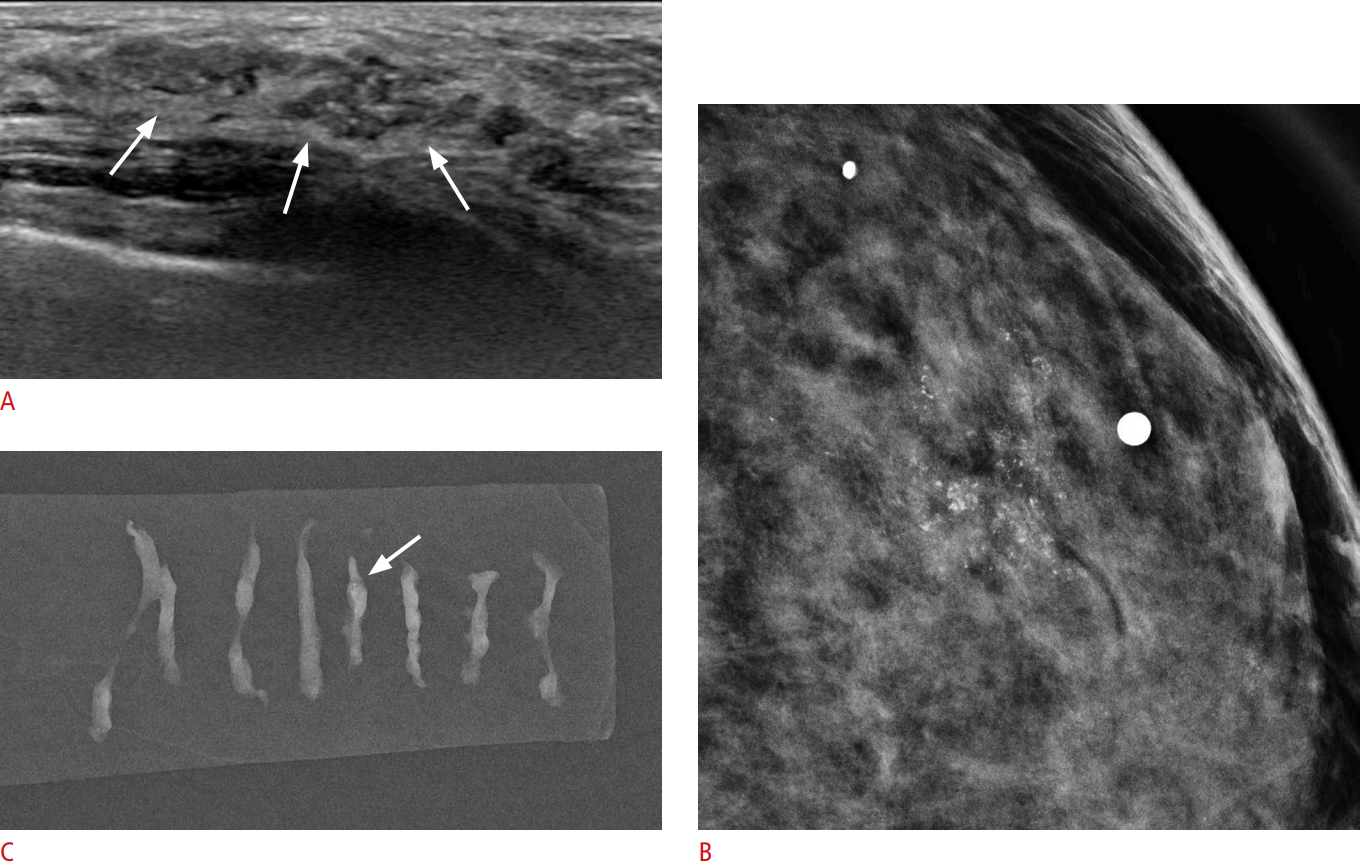
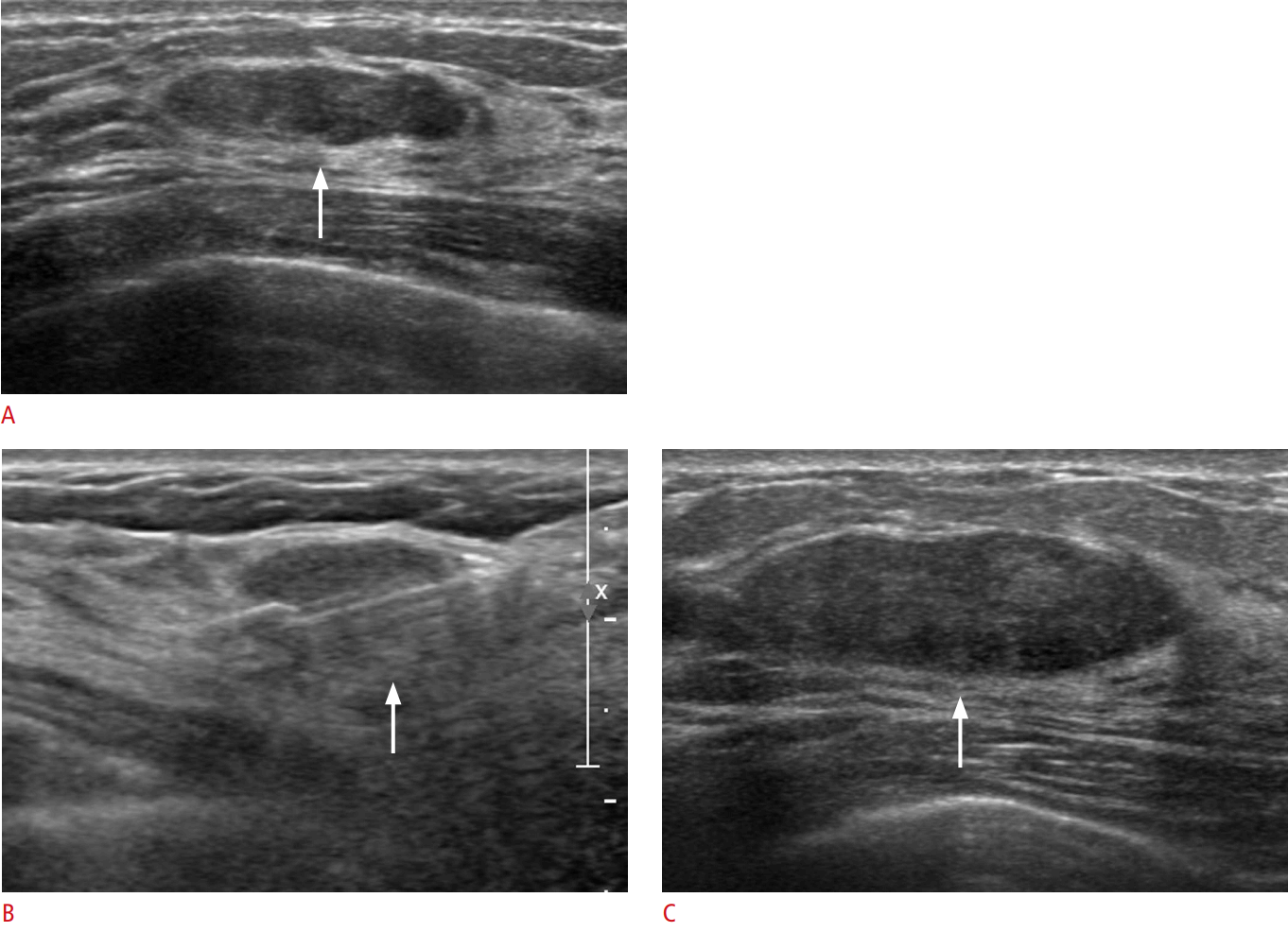
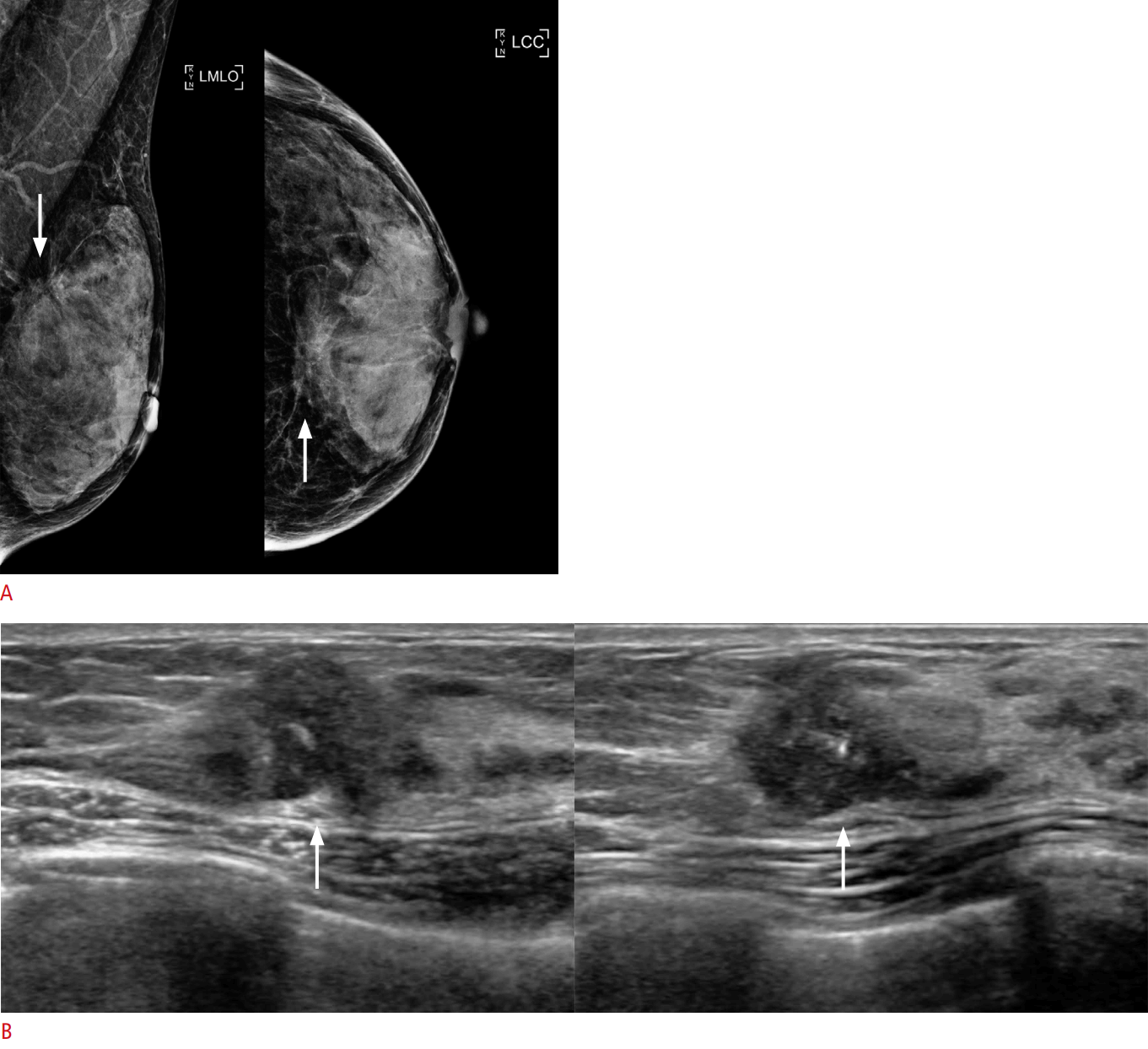
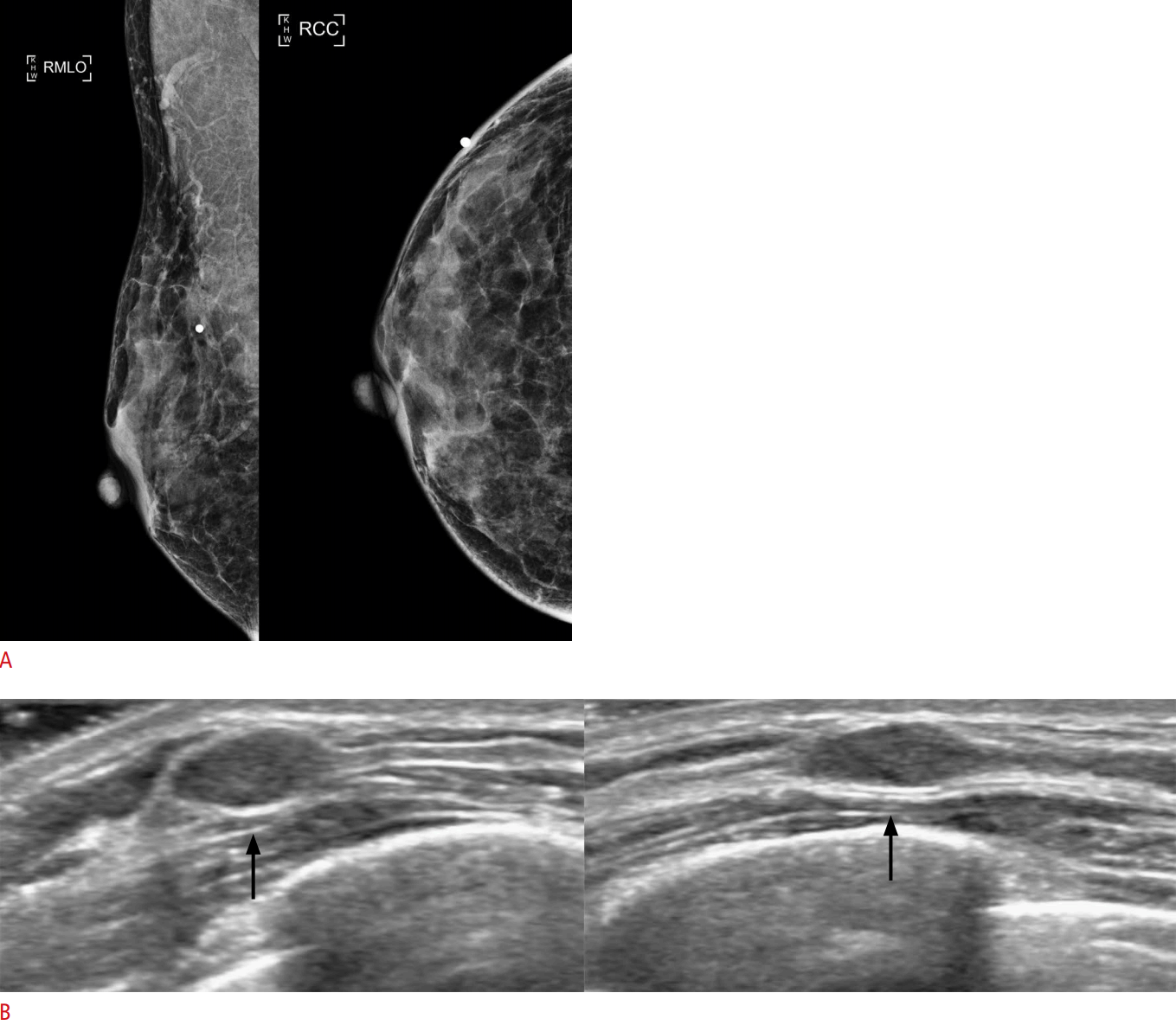

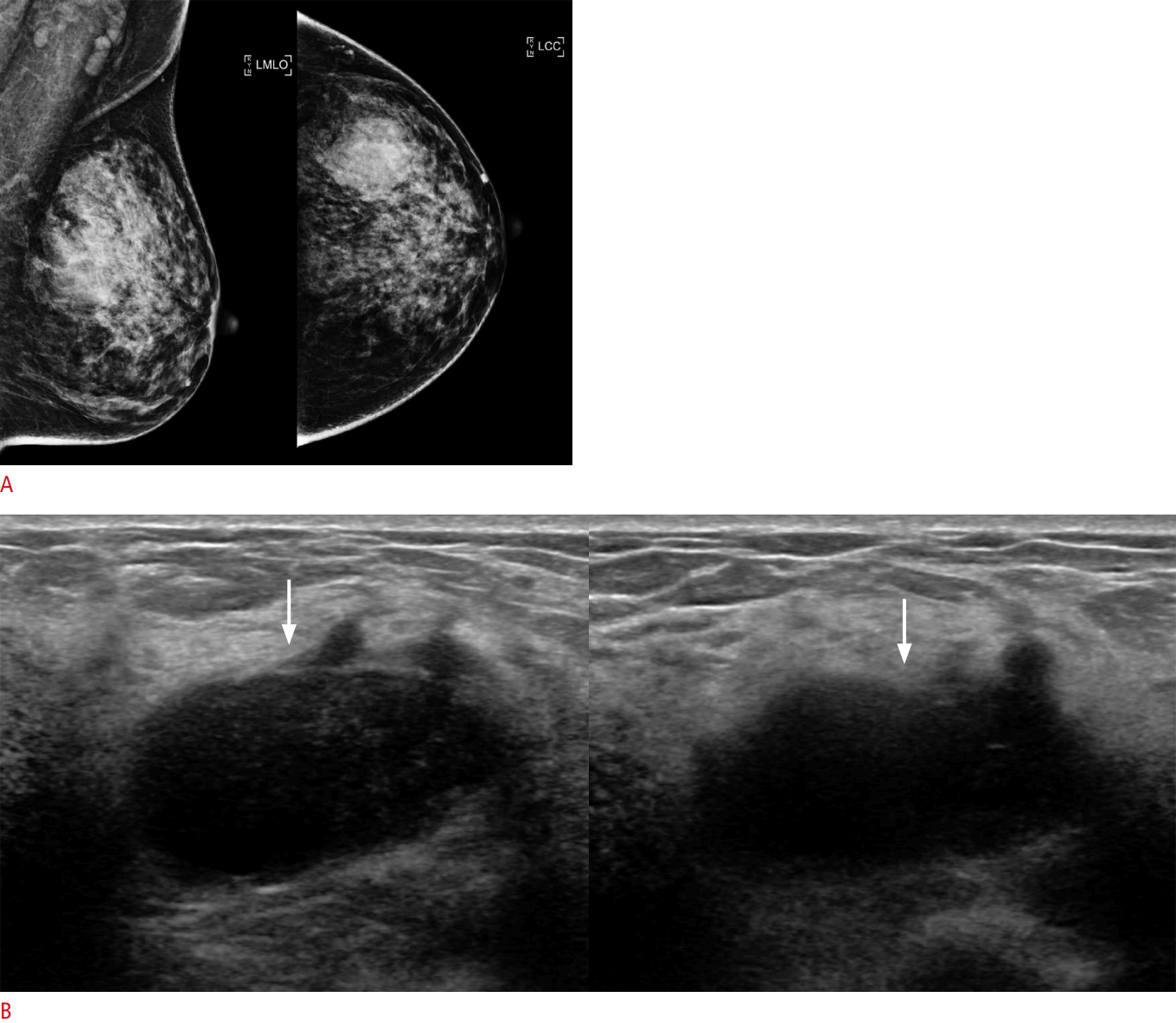
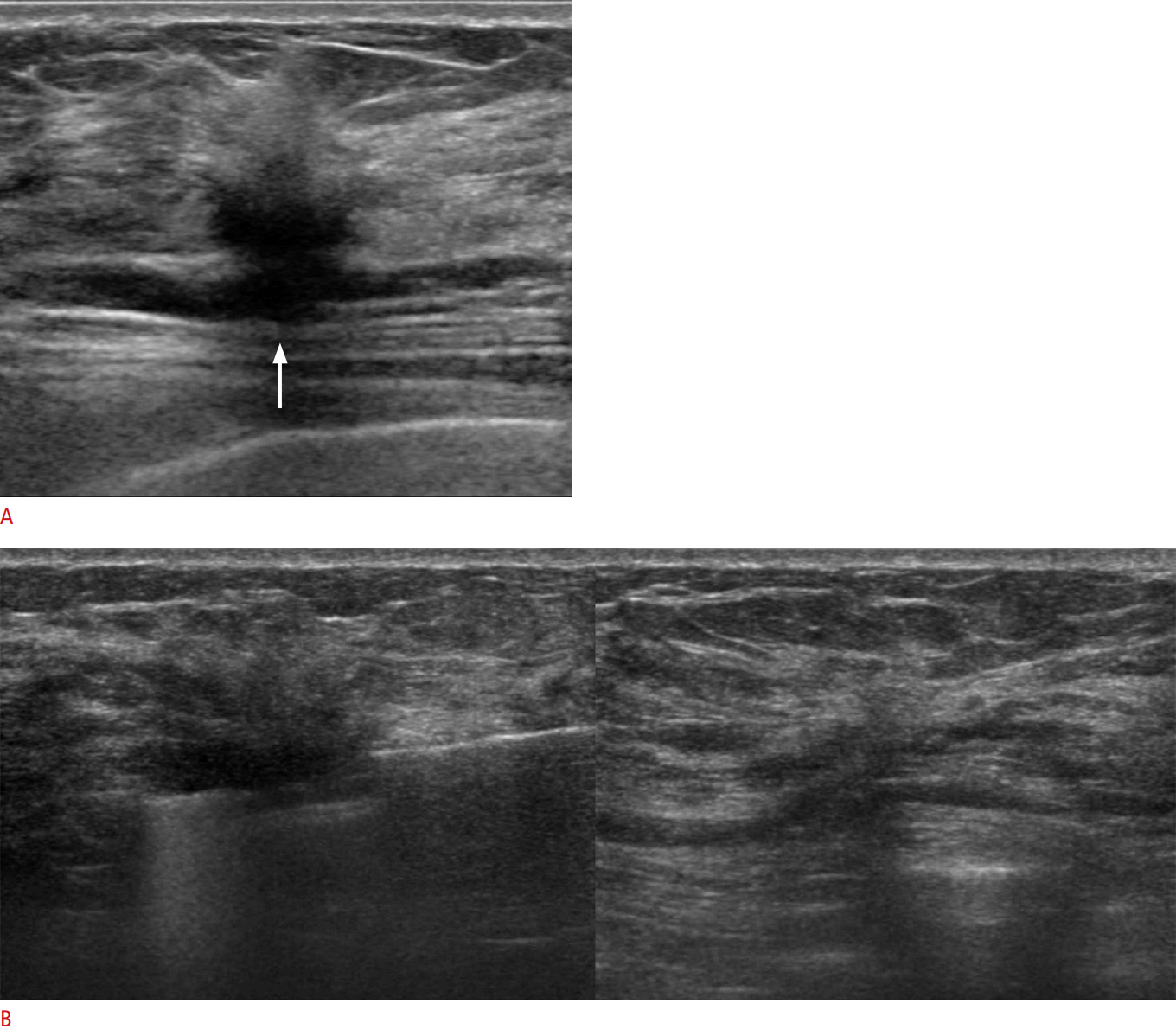
 Download Citation
Download Citation PDF Links
PDF Links PubReader
PubReader ePub Link
ePub Link Full text via DOI
Full text via DOI Full text via PMC
Full text via PMC




